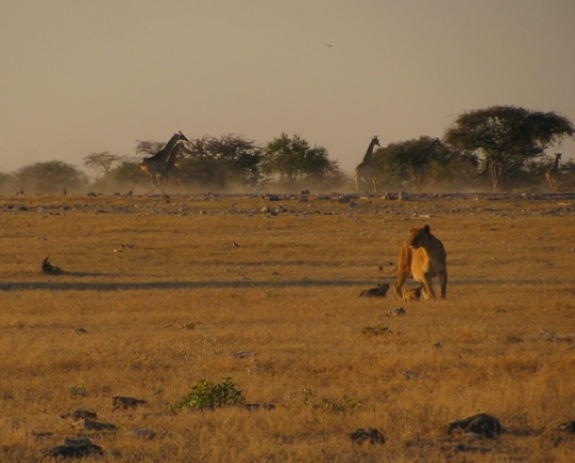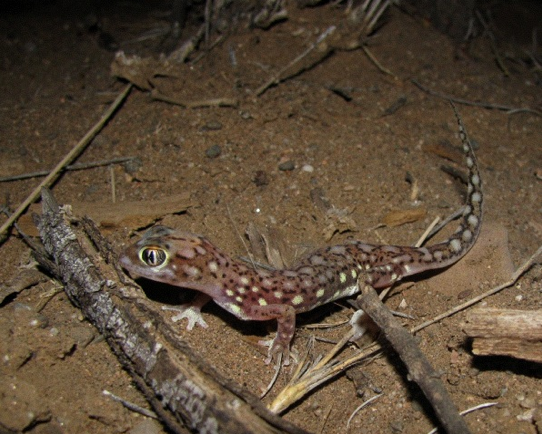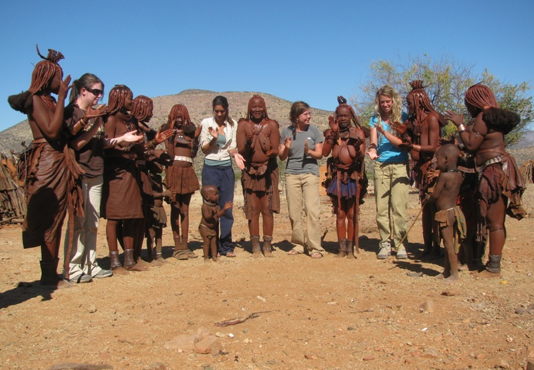Namibia is located on the Atlantic coast between South Africa and Angola, and for five years my fellow instructors and I from The University of Arizona have been taking 8 – 13 undergraduate and graduate students from a variety of different majors to Namibia as part of a six-week conservation biology class. Why Namibia?
1) It is one of the most politically stable countries in Africa
2) It has a large variety of different ecosystems
3) It has the second lowest human population density per unit area of any country
4) English is the national language
5) Conservation is actively promoted
6) It has a rich variety of reptile species, including geckos
[ad#sponsor]
We offer the class during our Summer Session from late May through early July; this is the hottest period in southern Arizona, so it’s always a surprise how cold it can be when we travel to the southern hemisphere and arrive in Windhoek, Namibia’s capital, in late May. It’s also a surprise how similar the landscape is to southern Arizona; the similarity ends when we see baboons and warthogs on the side of the road from the airport to our first overnight destination a few kilometers west.
As part of our class we travel throughout central and northwestern Namibia in 4 x 4 Nissan trucks, camping throughout. Each truck has two comfortable roof tents that can accommodate four students. While we visit several conservation biology organizations in Namibia such as the Cheetah Conservation Fund and the Save The Rhino Trust, much of the time we visit remote areas, exploring the landscape and visiting the local people.
My co-instructors and I share an interest in herpetology so we spend a good deal of time after dinner near camp wearing our headlamps and appropriate shoes looking for geckos. Some of our most informative conservations with the class have taken place while we are searching the nocturnal landscape for the telltale movement on the ground of exotic geckos such as the Barking Gecko (Ptenopus spp.), Palmatogeckos (Pachydactylus rangei), and Kaokogeckos (Pachydactylus vanzyli). The thrill of seeing these creatures in their native habitat never diminishes, and we spend a great deal of time photographing them, always careful to disturb them as little as possible.
This thrill is contagious: while our students come from a variety of different backgrounds and levels of experience camping, each class always contains some students with no prior experience with reptiles who get especially interested in herpetology. After our return at the end of the class they often go with us exploring the Arizona desert with a newfound appreciation.
Since our class take place during Namibia’s winter we don’t see all of the reptiles native to the area–for example, I have yet to see a Namibian Giant Ground Gecko (Chondrodactylus angulifer)–but it is amazing to see some species active–such as Barking Geckos and Palmatogecko’s–at 14C (58F). During the day the temperatures can approach 32C (90F), so we often see day geckos (Rhoptropus spp.) in rocky areas, and Namaqua Chameleons (Chameleo namaquensis) in the grasslands and dunes.
A gecko species we commonly see in the landscape and on buildings is Turner’s Gecko (Chondrodactylus turneri). What continually amazes me is that my first pet, bought in a petstore, was this very species! Little did I know at the time that I would get the opportunity to see this amazing creature in the wild. During my first trip to Namibia, within hours of my arrival, I was wearing out my camera batteries photographing a pair seen on the wall near the kitchen!
So often in Africa we see tour groups that travel great distances in large tour buses, with limited time spent exploring the landscape. I term this “Africa through the window”. For many this is a sufficient experience. Our philosophy in teaching this class has been to limit the number of students so that we can explore areas less travelled, and see firsthand the unique plants, animals, and people of this amazing country. This has been invaluable in engaging our students, and allows us to get to know our students as individuals, rather than clients.
It has been a wonderful opportunity helping to teach this class and explore the amazing landscapes of Namibia. Each year brings a different experience; one of the first lessons of field biology is that things don’t always go according to schedule, but every moment is a teachable moment, and as a friend of mine once said “time spent in the field is never time wasted”!








One Comment
Leave a ReplyOne Ping
Pingback:Gecko Time: Conservation Biology in Namibia - Geckos Unlimited